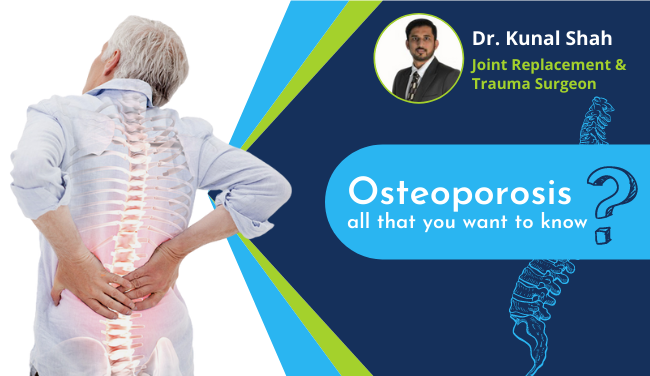As a joint replacement surgeon, I am often asked if reversing arthritis in a damaged knee is possible. Thankfully, the answer to this is definite ‘Yes’. PRP which stands for platelet-rich plasma has been used successfully in the last decade for treating multiple degenerative conditions.
When the patient comes to us at an early stage the little wear and tear of the cartilage can be treated with a PRP injection. I compare it to potholes on the road. When there are one or two of them then they can be repaired but when there are multiple then the road has to be re-laid. Similarly, small damages in cartilage can be repaired with PRP therapy. but if the loss of cartilage is severe then Knee replacement is the only viable solution.
The article will explain in detail the method, the scientific mode of action, and other details about this unique therapy.

Although blood is mainly a liquid (called plasma), it also contains small solid components (red cells, white cells, and platelets). Platelets are tiny cells in the blood that are responsible for clotting and promoting healing. They contain a variety of growth factors that can stimulate the body’s natural healing processes, promoting the growth of new tissue and reducing inflammation.
PRP is plasma with many more platelets than what is typically found in the blood. The concentration of platelets – and, thereby, the concentration of growth factors – can be 5 to 10 times greater (or richer) than usual.
Knee osteoarthritis is a common orthopedic condition that affects millions of people worldwide. It is a degenerative disease that causes the cartilage in the knee joint to break down, leading to pain, stiffness, and reduced mobility. While there are several treatment options available for knee osteoarthritis, Platelet-Rich Plasma (PRP) therapy is an emerging treatment that has kept the promise in promoting knee regeneration and reducing pain and inflammation in the knee joint.
How Does PRP Work?
The PRP solution is prepared by drawing a small amount of blood from a patient and processing it in a centrifuge to separate the platelets and growth factors from the rest of the blood components. This concentrated solution is then injected into the knee joint, where it can help to reduce pain, and inflammation, and stimulate the healing of damaged cartilage and other tissues.

Platelet Rich Plasma Injection (PRP Injection)

Your doctor will take a sample of your blood and spin it in a centrifuge to isolate the plasma. The concentrated plasma is then injected directly into the affected area to promote healing.
The process takes approximately one hour. It may take a few weeks or months to see results from the therapy.
PRP therapy for knee regeneration is typically performed on an outpatient basis and does not require general anesthesia. The procedure is minimally invasive, and patients can usually resume normal activities within a few days after treatment. The number of PRP injections needed to achieve optimal results can vary depending on the severity of the knee osteoarthritis and the patient’s individual needs.
Candidates for a Platelet Rich Plasma Injection
- Osteoarthritis
- Chronic tendon injuries such as tennis elbow and Achilles tendonitis, jumper’s knee, or patellar tendon pain
- Plantar fasciitis
- Acute injuries such as pulled hamstrings or knee sprains
Duration of Platelet Rich Plasma Injection (PRP Injection) Treatment and Recovery
- A PRP injection process takes approximately one hour.
- While most people can continue their daily activities after a PRP injection, your doctor will instruct you to rest the affected area for a specified period.
- You may not experience immediate symptom relief, but you will likely notice the affected area is healing faster in the weeks following the injection.
Benefits of PRP Therapy
- One key benefit of PRP therapy is that it helps with pain relief. In fact, it has helped patients ease their reliance on prescription painkillers or anti-inflammatories, which means PRP therapy can also be used in pain management therapies.
- In addition, PRP therapy can also help delay or eliminate the need for joint-replacement surgery. If the injury is healed or the pain is greatly reduced, surgery is usually no longer necessary.
- Reduced pain and inflammation: PRP therapy can help to reduce pain and inflammation in the knee joint, improving mobility and quality of life for patients with knee osteoarthritis.
- Regeneration of tissues: PRP therapy can stimulate the growth of new cartilage and other tissues in the knee joint, promoting knee regeneration and improving joint function.
- Non-surgical approach: PRP therapy is a non-surgical approach to knee regeneration that does not require general anesthesia, reducing the risks and complications associated with surgery.
- Minimal downtime: PRP therapy is a minimally invasive procedure that requires little downtime, allowing patients to resume normal activities quickly.
Conclusion
PRP therapy is an emerging treatment option for knee osteoarthritis that has shown promise in promoting knee regeneration and reducing pain and inflammation in the joint. By utilizing the body’s natural healing processes, PRP therapy can stimulate the growth of new cartilage and other tissues, improving joint function and quality of life for patients with knee osteoarthritis.
Platelet-rich plasma therapy is a simple, low-cost, and minimally invasive intervention that is feasible to deliver in primary care to treat degenerative lesions of the articular cartilage of the knee. This therapy appears to have minimal associated harmful effects and may have beneficial effects in terms of pain, health utility, patient satisfaction, and goal-orientated outcomes.
While the use of PRP therapy for knee osteoarthritis is still a relatively new and developing field, there is a lot of evidence that supports the use of this therapy
We at Ashutosh Hospital, Vadodara have treated more than 100 patients of Knee arthritis successfully over the last 6 years. The results are truly gratifying and I encourage patients to explore this option for the treatment of their Knee Arthritis.





